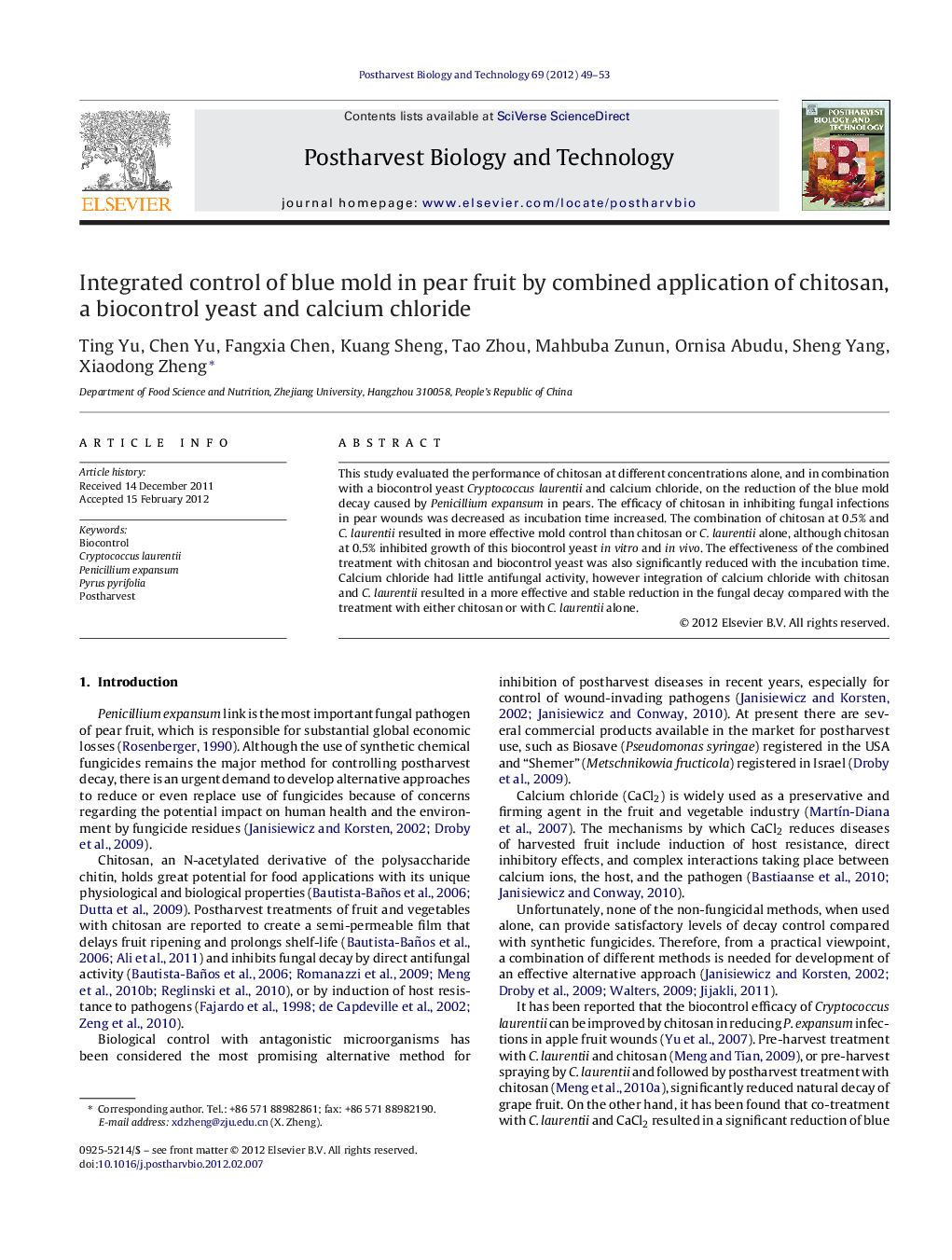| Article ID | Journal | Published Year | Pages | File Type |
|---|---|---|---|---|
| 4518676 | Postharvest Biology and Technology | 2012 | 5 Pages |
This study evaluated the performance of chitosan at different concentrations alone, and in combination with a biocontrol yeast Cryptococcus laurentii and calcium chloride, on the reduction of the blue mold decay caused by Penicillium expansum in pears. The efficacy of chitosan in inhibiting fungal infections in pear wounds was decreased as incubation time increased. The combination of chitosan at 0.5% and C. laurentii resulted in more effective mold control than chitosan or C. laurentii alone, although chitosan at 0.5% inhibited growth of this biocontrol yeast in vitro and in vivo. The effectiveness of the combined treatment with chitosan and biocontrol yeast was also significantly reduced with the incubation time. Calcium chloride had little antifungal activity, however integration of calcium chloride with chitosan and C. laurentii resulted in a more effective and stable reduction in the fungal decay compared with the treatment with either chitosan or with C. laurentii alone.
► The efficacy of chitosan in inhibiting blue mold of pear decreased with time. ► Chitosan at 0.5% or above delayed the rapid growth of C. laurentii in pear. ► Chitosan at 0.5% enhanced biocontrol effectiveness of C. laurentii. ► Addition of CaCl2 further improved the effectiveness of C. laurentii and chitosan.
